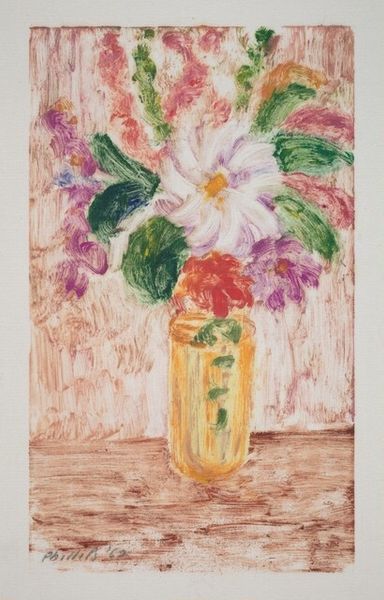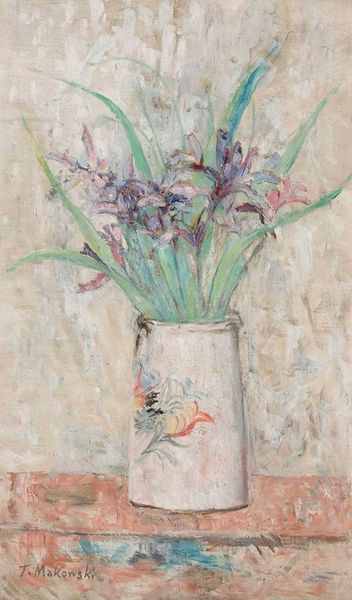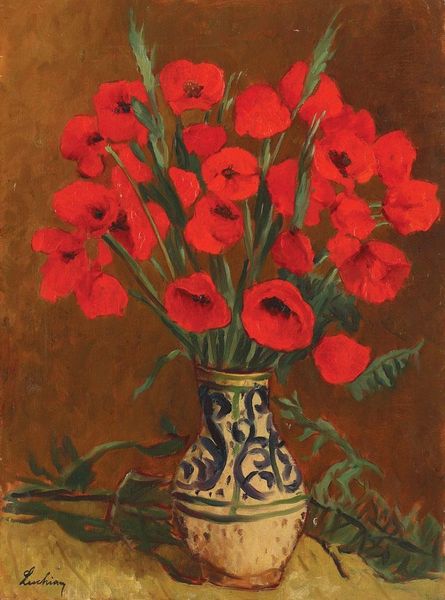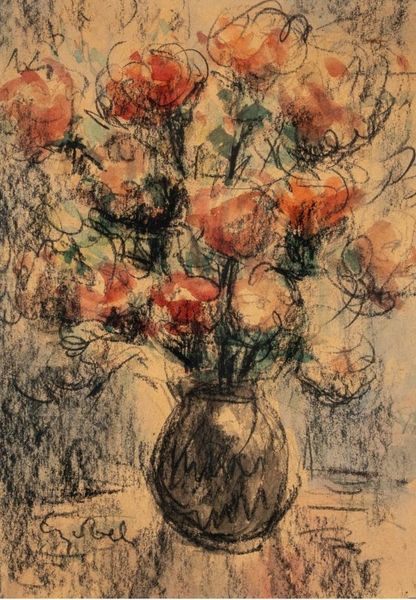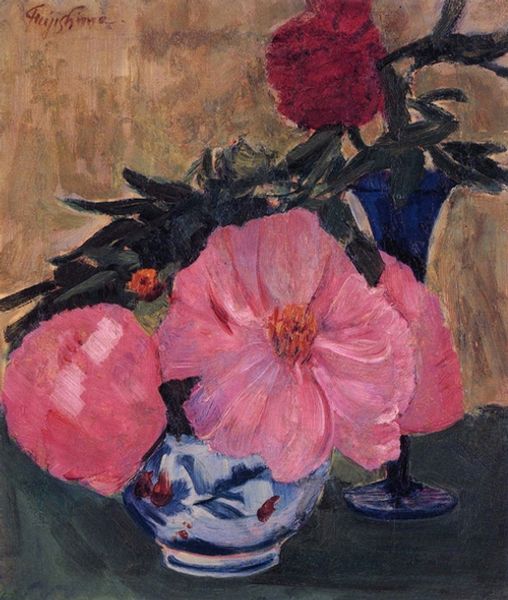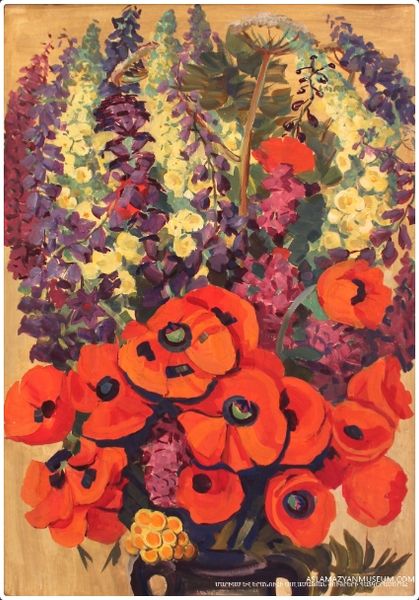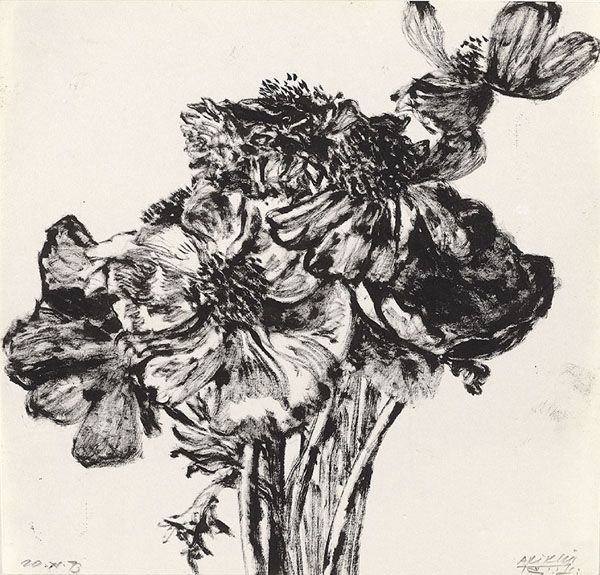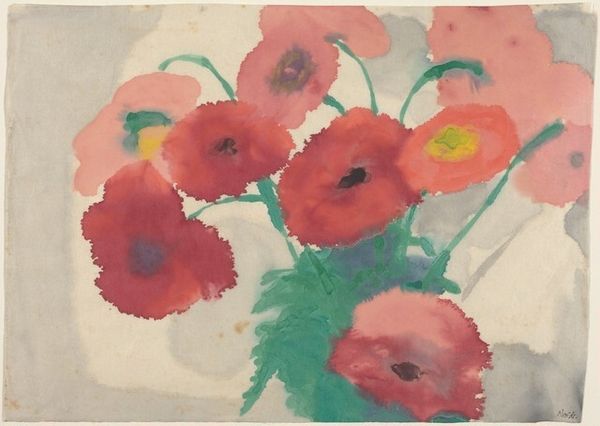
Copyright: Public Domain: Artvee
Editor: So, this is “Poppies in a Vase,” created in 1913 by Leon Wyczółkowski. It appears to be done in pastel and colored pencil on paper. There’s a fragility to the drawing, like the flowers themselves are drooping, conveying perhaps a sense of melancholy? What do you see in this piece? Curator: That's an interesting interpretation. Beyond the immediate visual appeal, I see this work as a statement on transient beauty and Poland's sociopolitical climate. Wyczółkowski created this during a period when Poland was partitioned, struggling for identity. How do the vibrant, yet fading poppies speak to this struggle for national expression and cultural resilience? Editor: That's a great point. The vibrant color definitely feels like an assertion, fighting against the odds of… fading. Do you think his choice of medium plays into that? Curator: Absolutely. The fleeting nature of pastel and colored pencil mirrors the fragility of Polish statehood at that time. Also, think about the traditional associations of flowers, typically linked with femininity and domesticity. Does Wyczółkowski subvert this, perhaps using the botanical art form as a subtle act of resistance, imbuing it with political meaning? Editor: I hadn't considered it that way. Seeing it as a subversive statement definitely adds another layer to the work. It’s no longer just a pretty still life. Curator: Precisely. It urges us to consider how art, even in its most delicate forms, can serve as a powerful means of cultural preservation and quiet protest. It is critical to examine how the historical experience intersects with artistic creation. Editor: I will remember that from now on. It definitely shifts how I perceive the artist's intention and the artwork's message. Thank you! Curator: My pleasure. Remember, engaging with art requires continuous questioning and a willingness to consider diverse perspectives, including the complex layers of social, political, and historical meaning.
Comments
No comments
Be the first to comment and join the conversation on the ultimate creative platform.


